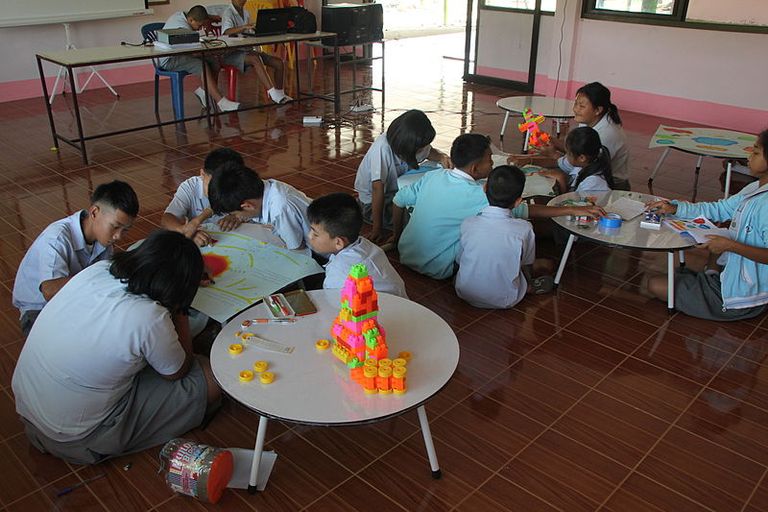
By developing projects, the student has a more active role in learning. Image credit: Wikimedia.commons.
This methodology consists of developing a project, usually in a group, which has been previously designed by the teacher according to the needs and competencies of the students to ensure that they are able to solve it and that by doing so, they acquire the skills and competencies that are intended to be achieved as an academic objective.
In this type of methodology, the student has a more active role, participates in the construction of the information, makes his reflections, and shares them with a group, while the teacher takes a less active role, merely guiding the development of the project and the evaluation of the results.
This is a system that offers many advantages, and mainly transforms the learning space, when a teacher dictates a master class, it is expected that all students are seated in a row facing forward, and remain listening attentively to the information, participating only when the teacher asks a question or allows them to do so, this modality is not effective for many areas or adapts to all learning styles. In contrast, when working with project-based learning, the classroom takes on a different feel, as students must communicate with their teammates and sometimes move around and interact with other team members, working relatively autonomously, something that can make achieving the academic objective more interactive and enjoyable.

With the development of projects, the classroom is transformed. Image credit: Wikimedia.commons.
In the traditional lecture mode, the psychological context is based on transmitting information, almost in a unidirectional way in an environment where only the teacher's voice should stand out, and the student is expected to pick up this information and memorize it. While in project-based learning the student participates in the construction of concepts, elaborates the content, and discusses and analyzes it with his peers, creating feedback that allows them to modify and adjust what they have learned. In other words, in this modality, students not only collect and memorize information but learn while they are doing.
For the teacher the challenge is to select and design the right project, the main topic should always be a problem to be solved or a question that challenges the student to confront different sources of information, analyze them and generate their own answer. The best projects are those that can be linked to the real world, confronting students to solve everyday problems with an academic approach, or looking for the real-world utility of the concepts learned beyond the walls of the school, I particularly liked those that inspire students to generate a social benefit, such as the construction of devices that harness solar energy, community gardens or the use of recycled material.
There are realities of our environment that are complex, so sometimes it is not possible to pretend to teach them through a simplification of the fact presented on a slide. This modality of assigning projects allows students to approach the reality or phenomenon to be studied with more sense and generate more meaning, where the student learns, does, and communicates both the process and the result. This method facilitates the empowerment of students and makes them the protagonists of their own learning process.
I hope you enjoyed the reading my friends, see you next time.